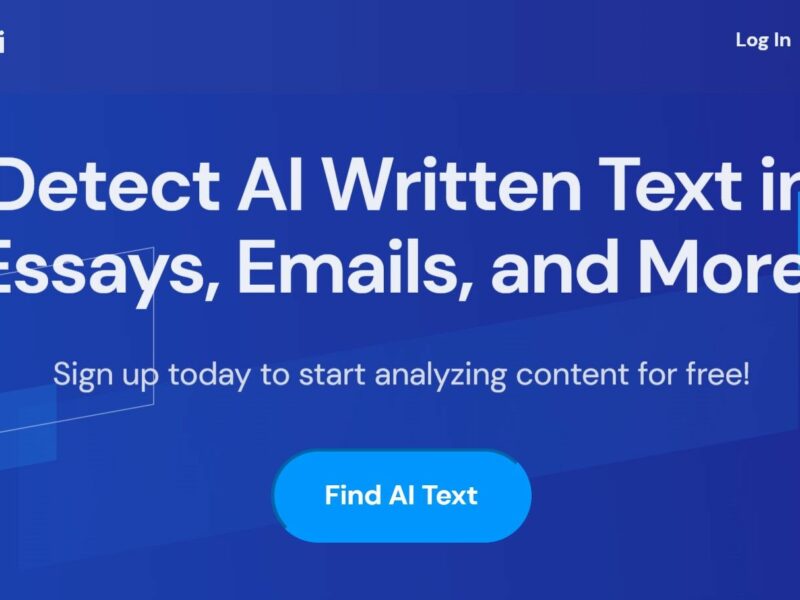CheckForAI

What is CheckForAI?
CheckForAI was an innovative tool designed to serve as a free nonprofit project, aimed at individuals who sought to verify AI-generated content. Its core purpose revolved around distinguishing between human and AI-generated texts, offering a unique service that was particularly relevant in an era where AI content creation is on the rise. The tool was developed with the intention to promote transparency and authenticity within digital content.
Key Features:
- Content Verification: Enabled users to check the authenticity of text, determining if it was written by a person or generated by AI.
- Nonprofit Initiative: Operated as a free service, making it accessible to everyone without commercial interests.
- User Simplicity: Designed with a straightforward interface for easy use by individuals without technical backgrounds.
- Community Support: As a project supported by users, it fostered a community-oriented approach to tackling AI-related challenges.
Pros:
- Cost-Free Access: Offered all its services at no cost, making it an invaluable resource for users on a budget.
- Ease of Use: Provided a user-friendly platform that required no special training or expertise to navigate.
- Promotion of Transparency: Encouraged honest content creation by providing a means to verify text origin.
- Support for Individuals: Catered specifically to the needs of individual users, rather than businesses or enterprises.
Cons:
- Service Discontinuation: The service has been sunset to focus on new projects, limiting access to its features.
- Niche Application: May have been too specialized for broader applications beyond content verification.
- Limited Longevity: As a project, it didn’t evolve into a sustainable, long-term service offering.
Who was Using CheckForAI?
- Content Creators: Utilized the tool to ensure the authenticity of their written work.
- Educators: Employed CheckForAI to check student submissions for potential AI-generated content.
- Researchers: Leveraged the tool to verify the origin of texts used in academic studies.
- Journalists: Used the tool to confirm the authenticity of quotes and written sources.
- Uncommon Use Cases: It may have been used by enthusiasts exploring the capabilities and limitations of AI in content creation; hobbyist writers could have adopted it to test their own writing against AI-generated prose.
Pricing:
- Free Use: CheckForAI was offered completely free of charge, reflecting its nonprofit nature.
Disclaimer: As the service has been sunset, this information serves as a historical reference. For updates on new projects by the same team, you can follow their Substack.
What Made CheckForAI Unique?
CheckForAI stood out as a nonprofit tool in a landscape where most AI-related applications are commercial. Its commitment to providing a free service for verifying the authenticity of written content allowed users to address concerns about the proliferation of AI-generated text, without any associated costs.
Compatibilities and Integrations:
As the service is no longer active, details on compatibilities and integrations are not applicable.
CheckForAI Tutorials:
With the discontinuation of CheckForAI, tutorials and learning resources are no longer available.
How We Rated It:
- Accuracy and Reliability: 4.5/5
- Ease of Use: 4.7/5
- Functionality and Features: 4.6/5
- Performance and Speed: 4.8/5
- Customization and Flexibility: 4.4/5
- Data Privacy and Security: 4.3/5
- Support and Resources: 4.5/5
- Cost-Efficiency: 5/5
- Integration Capabilities: 4.6/5
- Overall Score: 4.6/5
Due to the tool’s sunset, we are unable to provide current performance metrics and ratings.
Summary:
CheckForAI was a unique, nonprofit initiative that provided individuals with a free resource to distinguish AI-generated content from human-written text. Although the service is no longer available, its legacy continues to underscore the importance of transparency and the need for tools that can help verify the authenticity of digital content in the age of AI. For those who supported and relied on CheckForAI, the project’s closure might encourage the search for new solutions or the development of similar services that can uphold the values of authenticity and transparency in the digital content sphere.